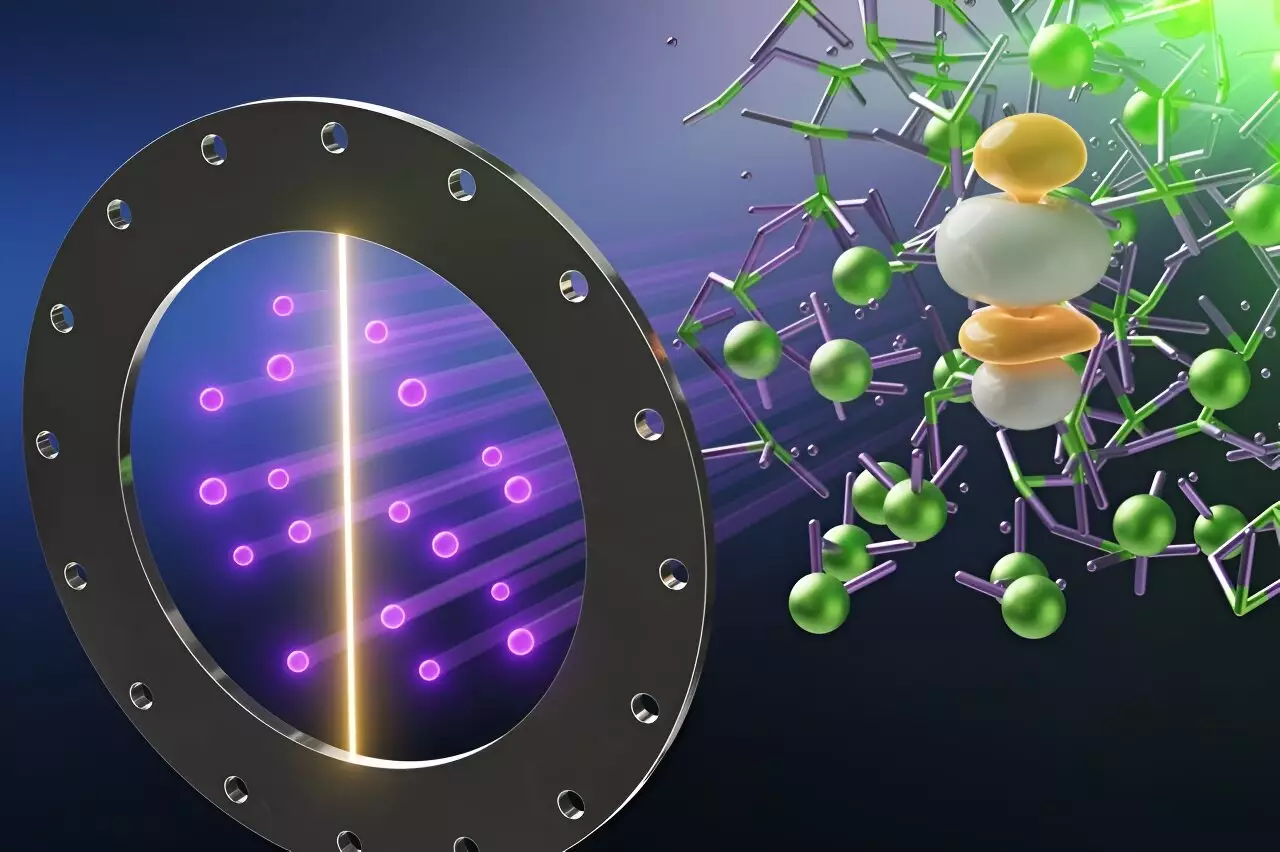Recent research published in the Journal of the American Chemical Society has brought new insights into the unique chemical dynamics of molten uranium trichloride (UCl3). As a potential fuel source for advanced nuclear reactors, understanding the characteristics of this high-temperature liquid salt is pivotal for future energy solutions. Santanu Roy from Oak Ridge National Laboratory (ORNL) emphasizes that this work establishes a foundational understanding needed for predictive modeling in reactor design. Such predictive capabilities are essential for advancing nuclear power as a clean and affordable energy source, particularly in a world increasingly focused on decarbonization.
The journey of molten salt reactors dates back to the 1960s when ORNL conducted pioneering experiments that demonstrated the feasibility of this technology. Over the decades, the interest in molten salt reactors has revived, especially as nations aim to reduce greenhouse gas emissions and seek alternative energy solutions. Unlike traditional nuclear reactors that rely on solid uranium dioxide pellets, these innovative systems utilize liquid fuel salts which introduce unique chemical behaviors. Understanding the complex atomic interactions within these molten fuels is vital for ensuring safety, efficiency, and reliability in future reactor designs.
The recent study was a collaborative effort among ORNL, Argonne National Laboratory, and the University of South Carolina. Utilizing advanced computational techniques in conjunction with the Spallation Neutron Source (SNS), a premier neutron scattering facility operated by the Department of Energy, the researchers set out to investigate the atomic structures and dynamics of UCl3 in its molten form. Neutron scattering allows scientists to probe materials by measuring the interactions between neutrons and atomic nuclei, providing insights into the arrangement and movement of atoms.
The complexity of studying a radioactive salt at 900 degrees Celsius, akin to volcanic lava, required meticulous safety protocols and special containment measures. This level of precaution underscores the challenges scientists face when exploring materials that not only handle extreme temperatures but also possess radioactive properties.
One of the groundbreaking revelations from this study was the behavior of UCl3’s atomic bonds during the transition from solid to liquid. Contrary to typical expectations in thermodynamics—where materials tend to expand as they heat up—the bonds between uranium and chlorine shrank in size. This unexpected contraction raises intriguing questions about the nature of these bonds and the overall behavior of actinide chemistry under extreme conditions.
The oscillating bond lengths observed add another layer of complexity, suggesting that the interactions between uranium and chlorine may not be straightforward ionic bonds as traditionally thought. Instead, the bonds displayed a rapid oscillation, sometimes appearing more covalent in nature. Such dynamics, which occur on an astonishingly short timescale of less than one-trillionth of a second, provide a new perspective on historical studies that struggled to consistently explain the behavior of molten UCl3.
These findings about molten UCl3 are not just of academic interest; they hold significant implications for the future of nuclear energy and materials science. Understanding the behavior of actinide salts can lead to advancements in nuclear waste management and pyroprocessing techniques, addressing some longstanding challenges in the field. As nations transition towards more sustainable and less carbon-intensive energy solutions, innovations in nuclear technology will play a crucial role in the global energy landscape.
Moreover, as researchers continue to explore the atomic dynamics of materials like UCl3, each discovery risks opening new avenues for research and development in both experimental methodologies and computational modeling. Such advancements promise to enhance the efficiency and safety of future nuclear reactors, potentially making them a more viable option for energy production in the coming decades.
The exploration of molten uranium trichloride represents a crucial leap forward in understanding high-temperature nuclear fuels. As the demand for cleaner energy sources grows, unraveling the complexities of actinide chemistry will be essential. Through collaborative research efforts and advanced analytical techniques, scientists can pave the way for innovative reactor designs that not only produce safe, reliable energy but also contribute to a lower carbon future. The findings from this study signify a promising beginning on this path, marking an exciting phase in nuclear fuel research that could redefine how we harness the power of nuclear energy.


Leave a Reply